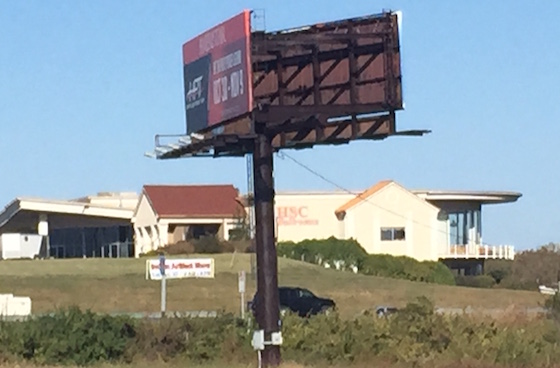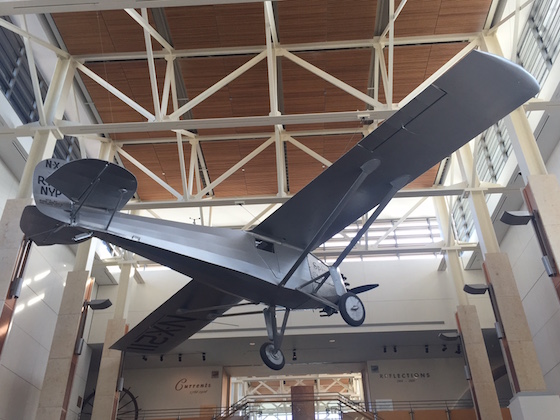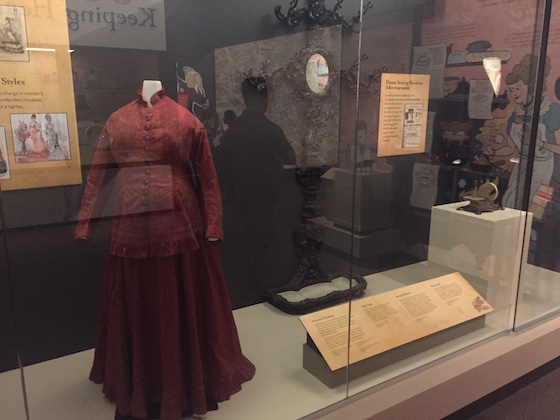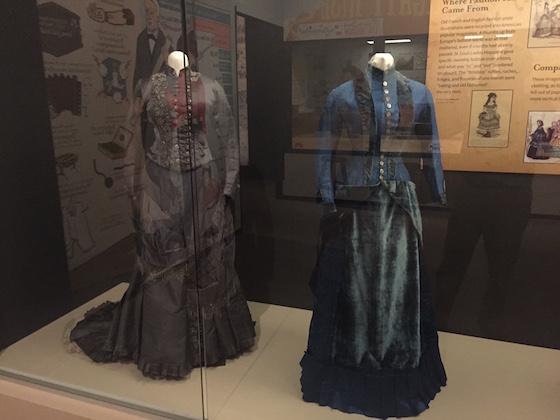Memo From Frank
Thanksgiving is the time of year when you should give thanks for all that you have. In addition to my immediate family, friends and business, I am also thankful for my extended “billboard family”. When I wrote that first book about the industry, I had no idea that I would meet so many interesting people or contribute to people’s lives in the way that it has all turned out. Nobody enjoys talking or writing about the billboard industry more than me, and I have really enjoyed all these years of educating those who are interested in this unique business sector. So thanks for reading this newsletter, thanks for your emails and letters, thanks for reading my posts on the forum, thanks for reading my book and course, and thanks for talking to me in person. I would also like to thank my mentors: those industry old timers who taught me all the insider secrets, tricks and shortcuts when I was getting started. Although there was still a lot of lessons learned as I went, they helped to lay the groundwork to save me from a bunch of initial missteps and blunders. I would also like to thank all of the advertisers who have pledged their ad budgets to signs I’ve built or bought. A nicer group of people have never existed. This is a great business and you made a good decision to get involved in it!
What Size “V” Should I Build?

The “V” is the internal spacing between the two faces of the billboard. It is designed to increase the read time and effectiveness of the ad by “pointing” the ad toward the viewer. And understanding how to use a “V” correctly is a vital skill needed to be a good billboard owner.
Understanding the science behind the “V”
The whole point of the “V” is to angle the sign for maximum visibility to the customer on the road. It’s based on the simple principle that a sign at a right angle to the road has a shorter viewing time than one that is parallel to the road. The average sign has a clear read of around 500 feet, and the “V” is designed to expand that read for a few more valuable seconds. Unlike designing the smart phone, this is not rocket science and is not a concept that is hard to master.
Applying that science to your individual sign
What’s more difficult is deciding how to apply this concept to your individual sign. Some signs don’t need a “V” – for example, a billboard that is in a curve in the road and has a head-on visibility as you approach it. Other signs are only marketable with a severe “V”, as they have too short a read due to an obstruction. So the first decision any billboard owner must make is “does this sign need a “V” and, if so, how big”?
You can never have too much “V”
In a perfect world, every billboard would have an enormous “V”. Like the old adage “you can never be too rich or too thin”, you can also say about any billboard “you can never have too much “V””. When the average read time on a billboard is only about 5 seconds, even a single second of longer visibility is a 20% increase.
The restrictions of cost
The reason that every sign does not have a massive “V” is simple: cost. When you add a “V” to a wooden sign, it can sometimes double the cost, as you have to set a whole second set of poles. On a monopole sign, you can see increases in the $10,000+ range for a small “V”, and up to double the cost of the sign for a tri-face “V”. So the limitation here is price – and big money at that.
Some tricks to doing it properly
If your sign is 1) obstruction free 2) has a standard approach from the road and 3) is a right-hand read, then you probably don’t need a “V”. However, if your sign 1) has blockage 2) is on the wrong side of a curve in the road or 3) is a left-hand read, then a “V” is probably a good idea. Many sign owners, for the sake of cost, buy a very small “V” and then orient the sign so that the right-hand read is at a right angle to the road and all of the “V” is put on the left-hand read.
Conclusion
Understanding the “V” is an important skill for all billboard owners. Once a sign is built it’s too late to change the orientation of the sign faces to the street, so you need to take action on the front end and select a “V” to make the sign the best it can be.
Lessons Lindbergh Taught Us

On May 21st, 1927, Charles Lindbergh was the first person to cross the Atlantic, flying continuously from Long Island to Paris, a feat that nobody before had succeeded in accomplishing. He was only 25 and become an instant American hero. But Lindbergh is also a great role model for getting into the billboard business.
Take a risk
Lindbergh took a gamble that most of us would never make, and we would never recommend, and that was risking his life to cross the Atlantic. All of his peers who tried this same undertaking were killed in the process. But Lindbergh also took risks in betting his financial future on obtaining the plane, and foregoing his steady job to prepare for the voyage. Had Lindbergh not taken this gamble, he would have never been famous as the pioneer of transatlantic flight, and instead lived as a simple mail carrier. So the first moral of Lindbergh is that you have to take risks to get really big rewards.
Believe in yourself
To make his flight, Lindbergh had only himself to rely on. Not only did he have to navigate across the ocean using only a compass and stars, but he also had to stay up for 34 straight hours without sleep. To make this possible, Lindbergh had to believe in himself. He had trained as a pilot for years, flying mail across America in all types of weather. He had learned how to navigate without much visibility or technology. And he believed that the adrenaline rush, coupled with keeping the windows of the plane open to keep the temperature cold, combined with a continual supply of sandwiches and coffee would do the trick. And he was completely right. If you are not convinced that you have the materials to succeed, then you should hold off until you are 100% convinced that you can win.
Don’t listen to doubters
From the announcement of this attempt to cross the Atlantic, Lindbergh was besieged by doubters who told him that it was impossible and that he was the last person on earth who could make the flight. Lindbergh ignored all of these nay-sayers. In his opinion, he knew that it was possible, and was no more complicated than his crossing of the U.S. delivering mail – only significantly longer. He understood that you must never listen to criticism unless you first consider the source. When the designer of his plane told him that the wings needed to be longer, he knew that the source was an expert and that he better listen. But just some random person on the street who had never flown a plane was not a credible source to pass judgement on his project.
Have a Plan B
Lindbergh had an unusual Plan B: if he failed he died and didn’t have to worry about the ramifications. There was no fallback position. It was either great success or total tragedy – there was no option in-between. But every person who undertakes any project needs a Plan B in case they don’t hit their goals, and it does not have to be as severe as Lindbergh’s. A good Plan B couples a positive spin to your effort, in the form of lessons learned or a smaller scale counterattack. When I started my billboard company, my Plan B was to use the effort as a resume builder for a business school application. Having a good Plan B will give you extra confidence and peace of mind.
Conclusion
Lindbergh’s crossing of the Atlantic was considered one of the greatest achievements of the 20th century. And there are great lessons to be learned from his experience. Are you like Lindbergh? If so, it’s time to consider taking on a great effort that yields a huge reward.
Billboard Home Study Course
![]() How to Find a Billboard Location
How to Find a Billboard Location
![]() How to Buy a Billboard
How to Buy a Billboard
![]() How to Build a Billboard
How to Build a Billboard
![]() How to Operate a Billboard
How to Operate a Billboard
![]() How to Rent Ad Space on a Billboard
How to Rent Ad Space on a Billboard
![]() How to Sell a Billboard
How to Sell a Billboard
Get Your Copy Now!
The Importance Of The Law Of Parallax

The dog shown in this photo is just a regular dog, but it appears gigantic due to a photographic trick called “parallax”. And parallax has a great impact on billboards, as well. The definition of parallax is “the effect whereby the position or direction of an object appears to differ when viewed from different positions”. As a scientific experiment, hold your thumb up in front of a tree. Your 3” thumb appears to you bigger than a 50’ tree when you’re looking at it. That’s because your thumb is closer to your eye than the tree. Where this comes into effect on billboards is concerning obstructions. Just because your billboard is 50’ tall does not mean that it can’t be blocked by a 5’ tall bush, as a result of parallax. The moral is that you need to “flag” every sign location before you build it. Only a real life visual run-through can tell you if any smaller obstructions have you blocked due to parallax. I only ever built one sign without “flagging” it and it was a total disaster. A much shorter building blocked 50% of the sign due to parallax. So don’t gamble with your sign investment: make sure to avoid parallax issues by flagging every location.
A Trip To The St. Louis History Museum
One of my favorite aspects of the billboard industry is the freedom of being on the road and having the chance to choose to visit the out-of-the-way spots and points of interest as you drive by. As a result, I ended up at the St. Louis History Museum, at their exhibit of “Life in 1875”. I learned a lot from this attraction, including:
- The fact that nurses made only 85 cents a day while unskilled labor made $1.50 per day – and highest paid person at city hall was the fire fighter who earned $3 per day.
- That fewer than 20% of houses had indoor toilets.
- That a large number of people each year were killed by being kicked by a horse or run over by a wagon.
- That the typical work week was 12 hours per day Monday through Saturday, with only Sunday off.
- That the average household in New York City was 14.5 people, and in St. Louis 7 people.
- That Philadelphia was the second biggest city in the U.S. with 847,000 residents.
What’s the strangest thing I’ve found along the highway? A military museum in Vincennes, Indiana – the oldest city in that state – which is where you can find George Patton’s famous uniform from the Battle of the Bulge. It’s in the middle of nowhere and has no signage, but apparently Patton’s relative decided to give it to this small museum since he liked their style.


New Billboards For Sale On OutdoorBillboard.com
The Market Report
Prices Are Delayed By At Least 15 Minutes
